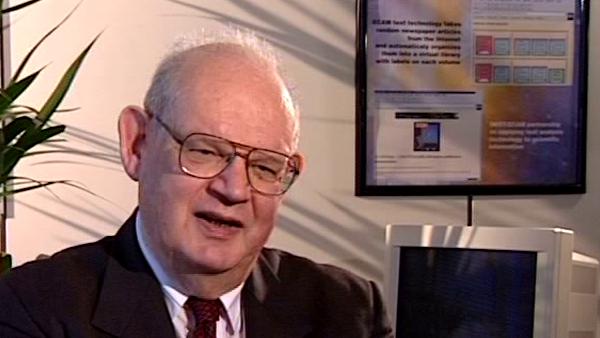NEXT STORY

Fractals and rules
RELATED STORIES

NEXT STORY

Fractals and rules
RELATED STORIES


|
Views | Duration | |
|---|---|---|---|
| 101. Development of work with turbulence and multifractals | 201 | 04:44 | |
| 102. White noise and fixed points | 244 | 03:58 | |
| 103. IBM and the educational system | 239 | 02:10 | |
| 104. Critical opalescence, Onsager and work in physics | 278 | 04:28 | |
| 105. Percolation | 187 | 05:03 | |
| 106. Diffusion limit aggregates | 166 | 03:21 | |
| 107. The complicated nature of DLA | 144 | 02:14 | |
| 108. Fractals and the distribution of galaxies | 258 | 05:52 | |
| 109. Fractality and the end of regularity | 171 | 02:05 | |
| 110. Fractals and rules | 354 | 01:28 |


Benoît Mandelbrot (1924-2010) discovered his ability to think about mathematics in images while working with the French Resistance during the Second World War, and is famous for his work on fractal geometry - the maths of the shapes found in nature.
Title: Fractality and the end of regularity
Listeners: Bernard Sapoval Daniel Zajdenweber
Bernard Sapoval is Research Director at C.N.R.S. Since 1983 his work has focused on the physics of fractals and irregular systems and structures and properties in general. The main themes are the fractal structure of diffusion fronts, the concept of percolation in a gradient, random walks in a probability gradient as a method to calculate the threshold of percolation in two dimensions, the concept of intercalation and invasion noise, observed, for example, in the absorbance of a liquid in a porous substance, prediction of the fractal dimension of certain corrosion figures, the possibility of increasing sharpness in fuzzy images by a numerical analysis using the concept of percolation in a gradient, calculation of the way a fractal model will respond to external stimulus and the correspondence between the electrochemical response of an irregular electrode and the absorbance of a membrane of the same geometry.
Daniel Zajdenweber is a Professor at the College of Economics, University of Paris.
Duration: 2 minutes, 6 seconds
Date story recorded: May 1998
Date story went live: 24 January 2008